Pawn Structure in Chess: How Beginners Win
You might find it helpful to follow GM Simon Williams’ advice to think of the pawn structure in chess as the skeleton of your position and the pieces as the organs. Pawns are much less fluid than pieces and often find themselves in fixed positions since they cannot move backward.
Understanding the pawn structure in chess will help you find the best squares for your pieces. You will also know which exchanges are favorable to you.
An excellent strategy is to exchange lots of pieces and leave your opponent with a bad minor piece against your strong piece. The most common result of this strategy is leaving your opponent with a “bad” bishop – one blocked by its own pawns.
However, this strategy does not work if you do not understand the strengths and weaknesses of different pawn structures. In this article, we will introduce you to five different types of pawn structures in chess:
- Doubled pawns.
- Isolated Pawns.
- Hanging pawns.
- Passed Pawns.
- Backward pawns.
The Doubled Pawn Structure in Chess
Doubled pawns arise when you recapture with a pawn, and it moves into the same file with another pawn. In the diagram below, White has doubled c-pawns.
The most famous opening leading to the double pawn structure in chess is the Nimzo-Indian Defense. Black gives up the bishop pair in return for giving White doubled pawns.
For example, 1.d4 Nf6 2.c4 e6 3.Nc3 Bb4 4.a3 Bxc3 5.bxc3
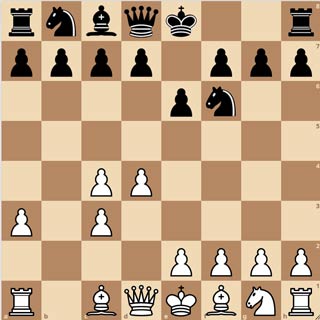
Although White has moved a side pawn, the b-pawn, to the center, it has left the a-pawn weak. In this example, on c4, the front doubled-pawn cannot get defended by a pawn and will become an object of attack by Black.
A standard method of attacking the pawn is to develop with …b6, …Ba6, Nc6-a5, d6, and Qd7-a4. Even if White manages to exchange the forward doubled pawn, Black will use the c4-square as an outpost for a piece.
When you have doubled pawns, do not rush into advancing them.
Advancing doubled-pawns will create weak squares that your opponent can use as outposts. For example, in this variation of the Nimzo-Indian Defense, if White plays c5, it gives Black access to d5 and c4.
In chess, doubling your opponent’s pawns comes at a cost. The doubled-pawns usually provide greater central control, you often give up the bishop pair, and your opponent gains use of a semi-open file.
Like all pawn structures in chess, the doubled pawns have benefits and drawbacks. Sometimes you can gain control of vital central squares by allowing your opponent to give you doubled pawns.
For example, if White develops a bishop to c4, you might play …Be6, and after Bxe6 fxe6, your doubled pawns on e6 and e5 control vital central squares. The semi-open f-file can be used to launch an attack.
Remember to be on the lookout for the chance to pay an exchange sacrifice with …Rxf3. This exchange sacrifice removes a crucial defender and exposes the castled king.
Paul Felix Schmidt - Efim Bogoljubov, 1943.06.15, 0-1, Salzburg Round 7, Salzburg AUT
The Isolated Pawn Structure in Chess
Isolated pawns are pawns that do not have another pawn on either side and can only be protected with pieces.
Attacking players will enjoy playing with an isolated pawn structure in chess. The most common isolated pawn is the isolated queen’s pawn.
This pawn structure is common in many chess openings with white. The Panov Botvinnik Attack against the Caro-Kann is an excellent way to reach the isolated queen’s pawn.
1.e4 c6 2.d4 d5 3.exd5 cxd5 4.c4 Nf6 5.cxd5 Nxd5
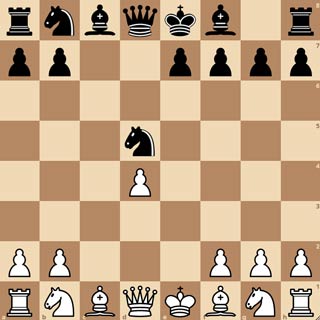
Although the pawn can be defended easily enough, White can do nothing about the weak square in front of the pawn. Sometimes White sacrifices the isolated pawn to create one in Black’s position.
This can happen after d5 if Black must capture the pawn with …exd5. The sacrifice usually occurs later in the game because an isolated pawn is especially weak in the endgame.
There are many reasons to play with an isolated queen’s pawn, including:
- Active piece play with open and semi-open files.
- Easy piece development in the opening.
- Excellent attacking opportunities against the castled king.
- Middlegame strategies that are easy to understand.
When playing with an isolated queen’s pawn, avoid exchanging your light-squared bishop if you are playing white or your dark-squared bishop if you are black. The pawn move a3/a6 prevents your opponent from attacking the bishop with …Nb4/Nb5.
Placing the queen and bishop on the same diagonal is often vital to your winning middlegame plan.
Along with learning a lot about chess, playing with an isolated queen’s pawn gives you many opportunities to sacrifice pieces.
Look at how Maxim Dlugy used a knight sacrifice to deflect the black king from defending h7. He also played a3 and doubled-up with the queen and bishop on the b1-h7 diagonal.
Dlugy, Maxim - Oll, Lembit, 1989, 1-0, GMA op Round 5, Moscow RUS
The Hanging Pawn Structure in Chess
Hanging pawns are two pawns side-by-side that other pawns cannot protect. For example, pawns on c4 and d4 with no b-pawn or e-pawn.
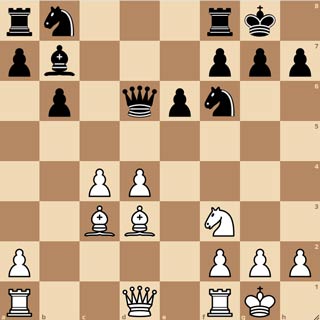
Like the isolated queen’s pawn, the hanging pawns can become extremely dangerous when you manage to play d5. In the above position, d5 frees the dark-squared bishop, which Black cannot counter.
White will sometimes sacrifice a pawn on d5 because this pawn advance can help generate a powerful attack. Sacrifices are often an essential strategy when playing with dynamic pawn structures like the isolated pawn and hanging pawns.
The hanging pawns, in this position, give White more control of the center and a space advantage.
Advancing either pawn could prove extremely dangerous, but if one pawn advances, it makes the other a backward pawn. If you play with this dynamic pawn formation, it is important to study backward pawns and passed pawns.
When playing against hanging pawns, remember that exchanges are your friend. Your main priority is to decrease the attacking potential hanging pawns provide for your opponent.
Before you attack, you must ensure your position is safe.
Use the semi-open files for your rooks to apply pressure against the pawns.
Nf6-e8-d6 is a common maneuver because the knight on d6 attacks the c4-pawn. The knight can go to f5 and attack the d4-pawn later.
Another common strategy to use against hanging pawns is to blockade them. For example, if the pawn advances to c5, you can blockade the d-pawn with …Nd5.
Look at how Svetozar Gligoric made excellent use of the hanging pawns in his game against Paul Keres.
Svetozar Gligoric - Paul Keres, 1958.06.25, 1-0, YUG-URS Round 3, Zagreb CRO
The Backward Pawn in Chess Middlegames
A backward pawn is one with further advanced pawns on either side. One of the most famous examples is Black’s backward d-pawn in the Sicilian Defense Sveshnikov Opening.
1.e4 c5 2.Nf3 Nc6 3.d4 cxd4 4.Nxd4 e5 5.Ndb5 d6
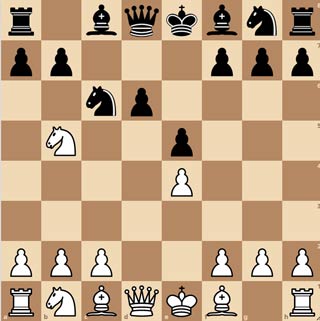
Like the isolated pawn, the square in front of the backward pawn is weak and provides an outpost. Because it is on a semi-open file, the backward d6-pawn can come under attack from White’s heavy pieces.
Unsurprisingly, in the Sveshnikov, a lot of play takes place around the d5-square. A white knight or bishop would be a potent attacking piece on d5.
In return for the backward d-pawn Black gets a lot of piece activity and claims a share of the center with the pawn on e5. The Sveshnikov is not a beginner’s opening, but it does teach you a lot about playing with a backward pawn.
Although the Tarrasch Defense usually leads to an isolated queen’s pawn for Black, it can lead to a backward c-pawn if White captures on c6. The following position arose after:
1.d4 d5 2.c4 e6 3.Nf3 c5 4.cxd5 exd5
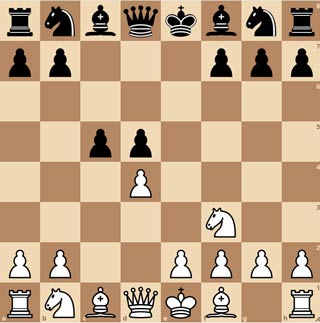
5.g3 Nc6 6.Bg2 Bg4 7.Ne5 Be6 8.Nxc6 bxc6

A sound strategy in a position like this is to advance the backward c-pawn and enter a position with hanging pawns. Although you might not intend to make hanging pawns part of your opening strategy, knowing how to play with them can be invaluable.
After 9.dxc5 Black was left with a backward pawn on c6. Later in the game, White won the c6-pawn leaving Black with an isolated queen’s pawn. Knowing how to play against different pawn formations will serve you well in all your middlegames.
Look at how skillfully White played against Black’s different pawn structures.
Semyon Abramovich Furman - Ratmir Kholmov, 1954.01.24, 1-0, URS-ch21 Round 11, Kiev URS
The Passed Pawn Is a Powerful Pawn
A passed pawn is a pawn without another pawn blocking its way to promotion. Because there is no pawn to stop the passed pawn, this task must get undertaken by pieces.
The knight is the best piece for blockading a passed pawn in most positions. This is due to the knight being able to jump over a piece. The worst blockaders are your heavy pieces (rooks and queen) because the passed pawn severely limits their scope.
To illustrate how powerful passed pawns can be, two connected passed pawns in an endgame can often be more powerful than a rook. Although passed pawns are vital to winning endgames, they can also be powerful in the middlegame.
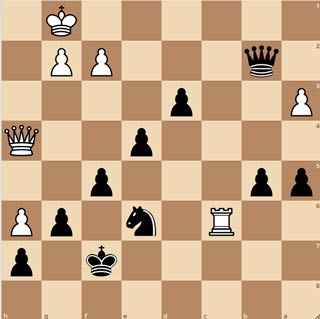
Black has three passed pawns: the b, d, and e-pawns. The e-pawn and d-pawn are connected passed pawns, which makes them particularly strong.
White is up an exchange in this position but after 48.Ra6 Qd4, he resigned. The passed pawns are unstoppable.
In fact, knowing the power of the passed pawns and how restricted the white rooks would be, allowed Petrosian to sacrifice the exchange on move twenty-two. The former world chess champion was not afraid to exchange pieces even while an exchange down.
Petrosian knew he could increase the power of his passed pawns by keeping queens on the board. The queen is excellent at driving away blockading pieces, especially a blockading king.
In the endgame, it often falls to the king to blockade the passed pawn. Remember this when you consider transitioning from the middlegame to an endgame.
Vlastimil Hort - Tigran Petrosian, 1970.05.10, 0-1, EUR-chT (Men) 4th Round 1, Kapfenberg AUT
In Conclusion
Learning how to play with and against typical pawn formations is an excellent way for beginners, and post-beginners, to improve their middlegame play. What you learn from studying pawn formations will serve you well throughout your entire chess career.
Unlike opening theory, this information is not something that gets outdated or set aside when you change your opening repertoire. In fact, you can work backward from the middlegame to the opening if you find a pawn formation you enjoy playing.
Pay attention to both sides of the position and study the narration to learn about improvements for both sides. If the variations are hard to follow, focus on the piece placement and any special regrouping or maneuvers.
Remember, you only need to know more than your next opponent. You do not need to achieve mastery in one lesson.
Author: This piece was originally written by Shaun Sedice

